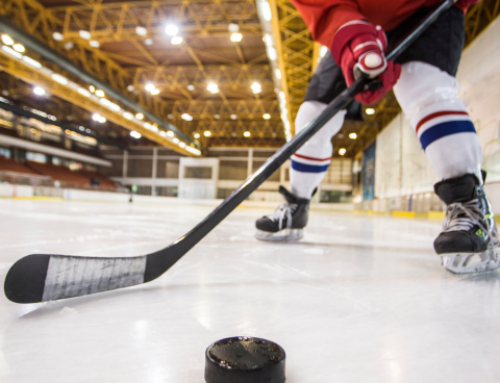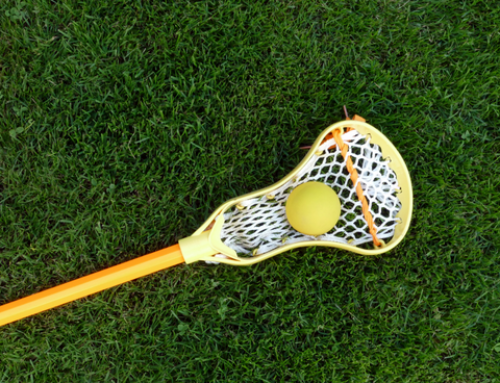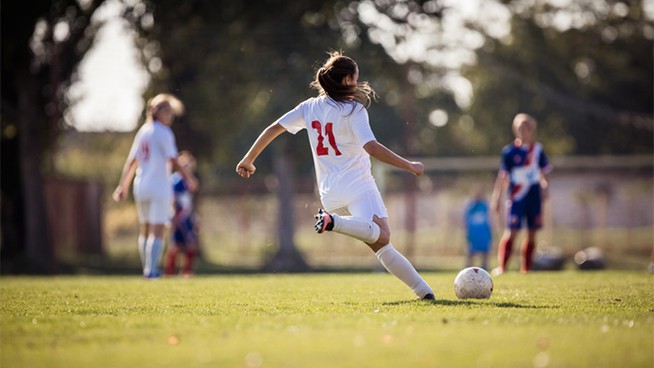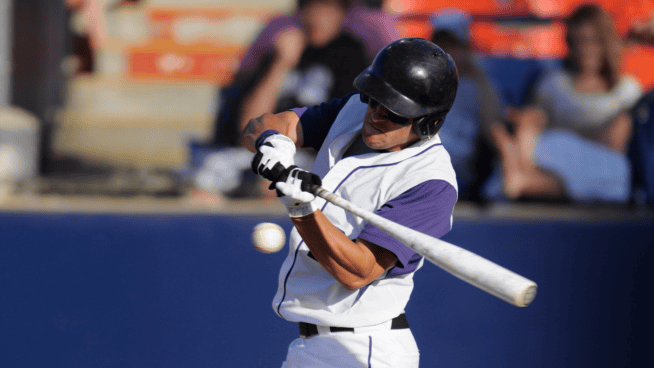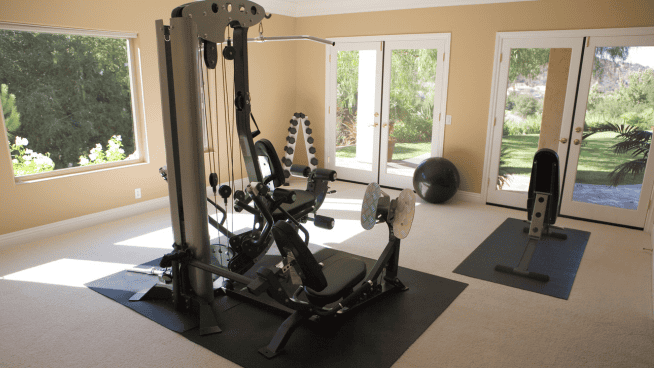How to Increase Skating Speed for Hockey, Part 2
Speed kills in hockey. It allows you to beat defenders to the net, win races to the puck and execute game-saving backchecks. In Part 1 of this series, we broke down the three phases of the forward stride—glide, push and recovery—and provided exercises to improve each one. Here, we focus on technique and on-ice drills to help make you the fastest skater on the ice.
Glide Phase Technique
It’s critical that your skate is directly below your hip with your knee in line. Your ankle, knee and hip should be bent, with your knee at an 80- to 90-degree angle. You can check this by looking down past your shin pads to the toecaps of your skates. If your toes are showing, more knee bend is necessary. Your weight should be distributed over your ankle and on the flats of your blades. This allows for an efficient glide and transfer of power through the entire blade during the push phase. As your opposite leg enters the recovery phase, your glide skate begins to move outward as it prepares to push.
Push Phase Technique
During the push phase, focus on pushing at a 45-degree angle. This allows for maximum forward force to be transferred to the ice. A push of less than 45 degrees prevents the skate blade from gripping the ice. Conversely, a stride angle greater than 45 degrees causes your momentum to shift too far laterally, thus limiting your power. Make sure to push from your hips, then your knees and finish by extending your ankle. Start pushing from the back third of the blade, through the mid-blade and finally through the toe.
Recovery Phase Technique
The final phase of the stride is the recovery of the skate from the fully extended position to the fully flexed position. The fastest and most efficient way to recover your skate is in a low, straight line. The more time it takes to recover from a stride, the longer it will take before the opposite leg can initiate the push phase, thus reducing your potential speed.
Stationary T Drill
Breaking the stride down into its fundamental components is the best way to improve your speed. A great drill to start with is the Stationary T Drill. Take two sticks (or a stick and line), and form a T shape on the ice. Straddle the stick in the ready position. Stride out to the side just grazing the ice. Your goal is to work on full extension of the leg, not to propel yourself forward. Focus on the technique tips discussed above. Hold the fully extended position for two seconds and return to the start position. Perform two sets of 10 reps each leg.
Skating Toe Drag
A drill to improve your recovery phase is the Skating Toe Drag. Skate down the ice in a straight line, focusing on pushing off at a 45-degree angle. During the recovery phase, drag the toe of your skate on the ice to aid in a low and efficient recovery. Skate the full length of the ice at 50 to 75-percent max speed for three to four sets.
By this time, you should have a solid foundation. The next step is to incorporate game situations in which you can focus on getting up to full speed. A partner full-ice race drill is a great way to put everything you’ve learned into a competitive game scenario.
Check out the video below for a detailed look at how a hockey player’s stride can be broken down.
Photo: miamiherald.com
Adam Redmond, CSCS, owns RedTech Innovations, a software development company that analyzes the stride of hockey players. He also trains athletes at Crash Conditioning, and he has worked for more than a decade with Steve Serdachny, the Edmonton Oilers’ skating and skills coach. Redmond played hockey for the University of Calgary Dinos, where he was an Academic All-Canadian.
RECOMMENDED FOR YOU
How to Increase Skating Speed for Hockey, Part 2
Speed kills in hockey. It allows you to beat defenders to the net, win races to the puck and execute game-saving backchecks. In Part 1 of this series, we broke down the three phases of the forward stride—glide, push and recovery—and provided exercises to improve each one. Here, we focus on technique and on-ice drills to help make you the fastest skater on the ice.
Glide Phase Technique
It’s critical that your skate is directly below your hip with your knee in line. Your ankle, knee and hip should be bent, with your knee at an 80- to 90-degree angle. You can check this by looking down past your shin pads to the toecaps of your skates. If your toes are showing, more knee bend is necessary. Your weight should be distributed over your ankle and on the flats of your blades. This allows for an efficient glide and transfer of power through the entire blade during the push phase. As your opposite leg enters the recovery phase, your glide skate begins to move outward as it prepares to push.
Push Phase Technique
During the push phase, focus on pushing at a 45-degree angle. This allows for maximum forward force to be transferred to the ice. A push of less than 45 degrees prevents the skate blade from gripping the ice. Conversely, a stride angle greater than 45 degrees causes your momentum to shift too far laterally, thus limiting your power. Make sure to push from your hips, then your knees and finish by extending your ankle. Start pushing from the back third of the blade, through the mid-blade and finally through the toe.
Recovery Phase Technique
The final phase of the stride is the recovery of the skate from the fully extended position to the fully flexed position. The fastest and most efficient way to recover your skate is in a low, straight line. The more time it takes to recover from a stride, the longer it will take before the opposite leg can initiate the push phase, thus reducing your potential speed.
Stationary T Drill
Breaking the stride down into its fundamental components is the best way to improve your speed. A great drill to start with is the Stationary T Drill. Take two sticks (or a stick and line), and form a T shape on the ice. Straddle the stick in the ready position. Stride out to the side just grazing the ice. Your goal is to work on full extension of the leg, not to propel yourself forward. Focus on the technique tips discussed above. Hold the fully extended position for two seconds and return to the start position. Perform two sets of 10 reps each leg.
Skating Toe Drag
A drill to improve your recovery phase is the Skating Toe Drag. Skate down the ice in a straight line, focusing on pushing off at a 45-degree angle. During the recovery phase, drag the toe of your skate on the ice to aid in a low and efficient recovery. Skate the full length of the ice at 50 to 75-percent max speed for three to four sets.
By this time, you should have a solid foundation. The next step is to incorporate game situations in which you can focus on getting up to full speed. A partner full-ice race drill is a great way to put everything you’ve learned into a competitive game scenario.
Check out the video below for a detailed look at how a hockey player’s stride can be broken down.
Photo: miamiherald.com
Adam Redmond, CSCS, owns RedTech Innovations, a software development company that analyzes the stride of hockey players. He also trains athletes at Crash Conditioning, and he has worked for more than a decade with Steve Serdachny, the Edmonton Oilers’ skating and skills coach. Redmond played hockey for the University of Calgary Dinos, where he was an Academic All-Canadian.





